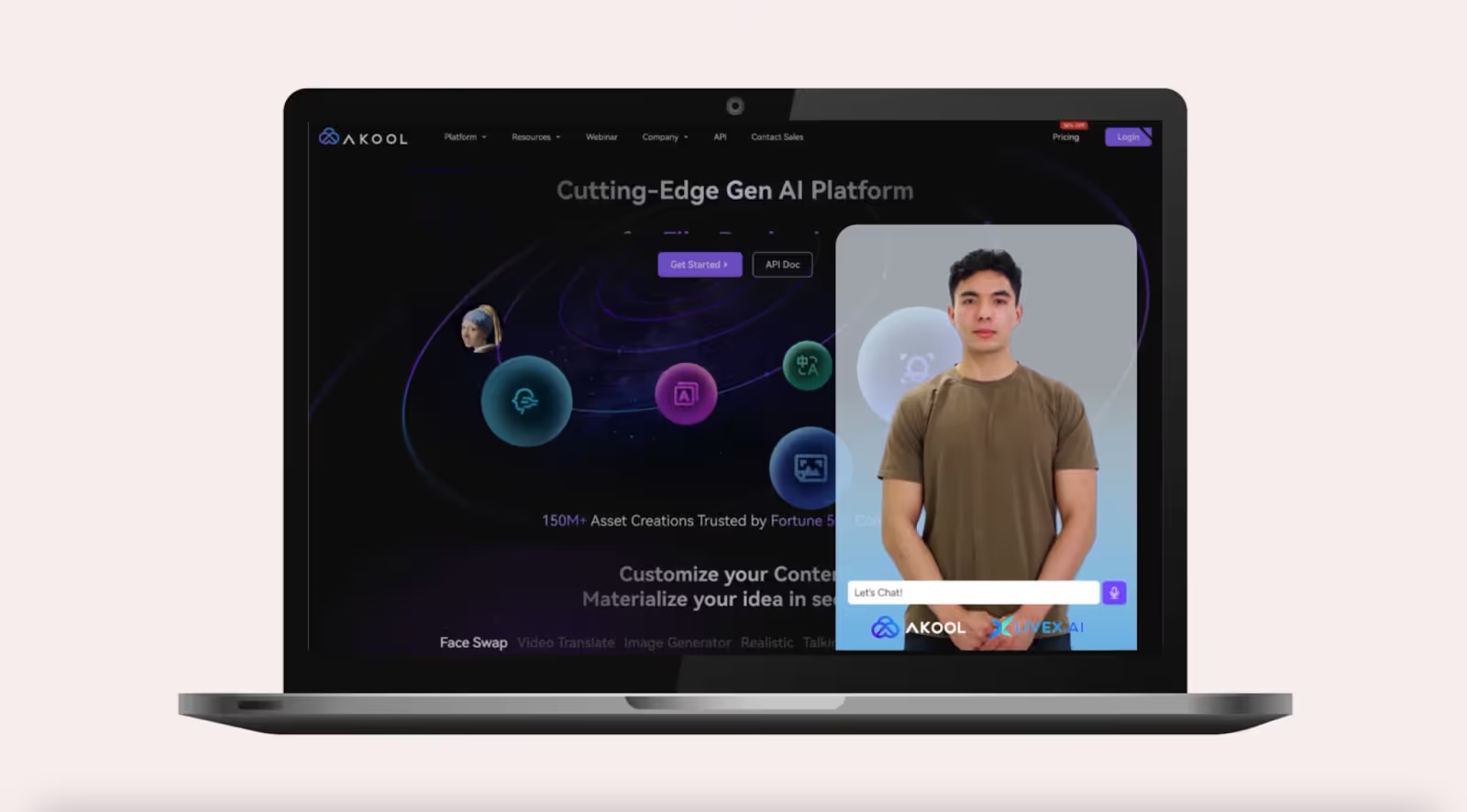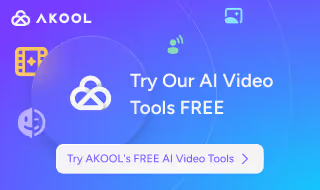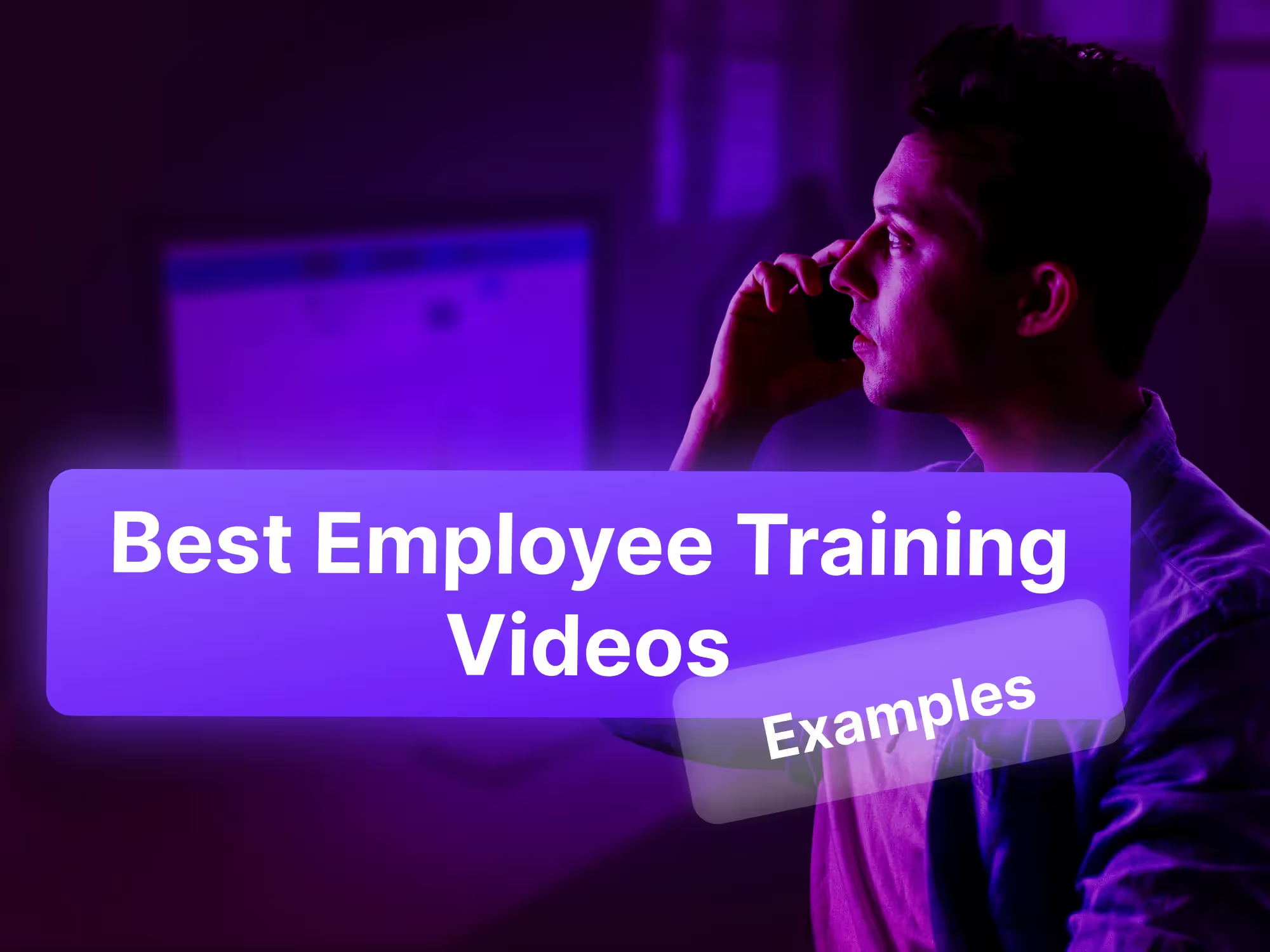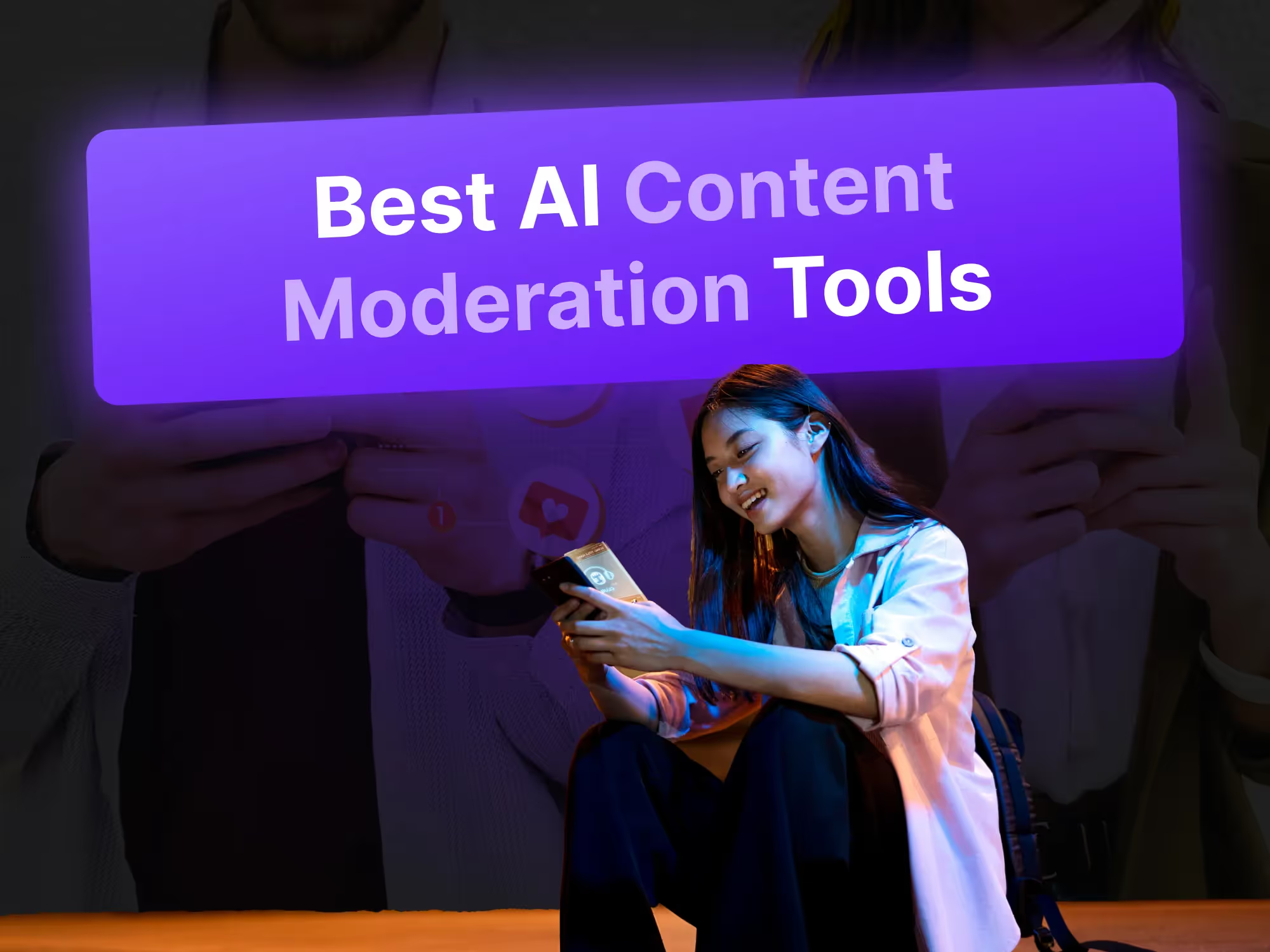Introduction:
Video content creation has been revolutionized by AI video generators. In 2025, businesses and educators are using these tools to produce videos faster, at lower cost, and at scale – without sacrificing quality. With over 80% of online traffic now driven by video, AI-powered video makers help meet the demand by turning scripts or ideas into engaging videos in minutes.
Below we’ve ranked the 5 best AI video generator tools of 2025. Each platform is covered with its standout features, ideal use cases (including in education), and any limitations. Akool leads the pack at #1, thanks to its innovative real-time avatars, multilingual voice cloning, and enterprise-ready integration. We then cover other major players like Synthesia, HeyGen, Runway ML, and DeepBrain AI. Read on to discover which AI video maker fits your needs and how they stack up – and see why Akool stands out as the top choice for creating AI videos in 2025.
1. Akool – Real-Time Avatar Platform for Enterprise AI Videos

Akool tops our list as the best AI video generator in 2025, offering a powerful all-in-one platform for AI-driven video creation. Its standout feature is real-time interactive avatars – you can literally puppeteer a digital avatar live during meetings or streams to deliver instant, conversational video content.
This real-time capability, combined with Akool’s high realism and expressiveness, bridges the gap between virtual presenters and live human interaction. Businesses can appear in any language or persona on the fly, which is a game-changer for global marketing and customer service. Akool also boasts enterprise-grade capabilities like robust API integrations (to embed Akool into your apps or workflows), scalability for high-volume output, and top-tier video quality (supporting up to 4K and even 8K on higher plans). Despite its advanced features, Akool remains accessible to small teams and individual creators thanks to an easy, no-coding interface.
Key Features:
- Real-Time Streaming Avatars: Drive a lifelike “digital twin” avatar live, complete with rich gestures and expressions. This is perfect for interactive webinars, live classes, or real-time customer engagement where the avatar responds instantly.
- Multilingual Video Localization: Supports dozens of languages out of the box. You can generate one video and quickly output it in multiple languages (e.g. produce versions in 10 different languages within minutes), greatly simplifying global content delivery.
- Voice Cloning: Akool’s voice cloning tech lets you clone your own voice or a brand voice so the avatar can speak in that voice. Training videos or presentations can sound like you or your chosen persona, adding a personal touch to AI-generated content.
- Enterprise Integration: Offers APIs and plugins (even an “Akool Live Camera” for Zoom/Teams) to embed AI video generation into your products or live calls. It’s enterprise-ready with collaboration features and secure infrastructure for large organizations.
- User-Friendly Creative Suite: No technical skills needed – just type a script and choose an avatar. Akool provides 80+ diverse avatar presenters to pick from (and even lets you create a custom avatar by uploading footage of yourself). The platform also includes extras like one-click video translation, a face-swap tool for fun or creative campaigns, and an AI image generator, all in one place.
Use Cases:
Corporate Training & Onboarding: Companies create a digital trainer (even using a manager’s cloned voice) to deliver onboarding or training modules in many languages, saving time on producing separate videos for each region.
Marketing & Sales: Marketers produce personalized video messages or live product demos with AI avatars presenting in different languages or styles. This enables global customer outreach and interactive product showcases without hiring presenters.
2. Synthesia – Popular Text-to-Video Avatar Studio
Synthesia is one of the most recognized names in AI video generation and a leader in text-to-video avatar creation. The concept is simple: you type a script, choose a lifelike AI presenter from Synthesia’s library, and the platform generates a professional-looking video of that avatar delivering your message. Synthesia’s claim to fame is its vast collection of avatars and languages – over 140 diverse presenter avatars (across different ages, ethnicities, and styles) and support for 120+ languages. This makes it an excellent choice for organizations that need videos in multiple languages, such as global training modules or international marketing content. The interface is very user-friendly: you pick an avatar, enter your text and choose a voice/language, and Synthesia produces a polished video with perfect lip-sync – no cameras or studios needed.
Key Features:
- Extensive Avatar & Voice Library: Offers 140+ built-in AI “presenter” avatars with various looks (business attire, casual, etc.) and a wide selection of voices. You can create videos in 120 languages with native-like pronunciation – great for authentic localization of your content.
- High-Quality, Polished Output: Synthesia’s avatars are known for looking professional and realistic. The platform provides templates for backgrounds and layouts, ensuring a clean, studio-quality look. It also renders videos quickly, so you get a finished video in minutes.
- Screen Recording & Templates: Synthesia includes a screen recorder integration, allowing you to combine an avatar’s narration with screen content (for example, overlaying the avatar in a corner while showing slides or a software demo). Dozens of pre-designed templates (for things like sales pitches or how-to tutorials) help give your videos a consistent, well-designed format.
- Enterprise Features: Geared toward corporate use, Synthesia offers collaboration tools for teams and custom branding options (easily add your logos or brand colors to videos). Notably, enterprises can even commission custom avatars – for instance, having an AI avatar version of your CEO or a specific instructor exclusively for your organization. API access is available for companies that need to generate videos at scale.
Limitations:
There’s no fully free version of Synthesia – new users must subscribe (aside from a one-time demo video), and the starter plan can feel a bit pricey if you need many video minutes.
Use Cases:
Employee Training & Onboarding: HR and L&D teams use Synthesia to produce consistent training modules and onboarding videos. For example, an avatar instructor can walk new employees through company policies or software training, saving HR staff from repeating live sessions.
3. HeyGen – Business Video Generator with Custom Voices
HeyGen (formerly known as Movio) is a popular AI video platform that enables you to create engaging business videos as easily as putting together a slideshow. It’s a text-driven video generator: you enter your script, choose an AI avatar and voice, and HeyGen produces a video of a presenter speaking your text. The platform’s focus is on keeping the process simple and flexible for various corporate and marketing uses. One notable feature is the ability to upload your own voice recording to create a personalized voice for the avatar. In other words, you can maintain your brand’s voice (or a specific person’s voice) in the AI-generated video – a form of “lite” voice cloning that adds authenticity. HeyGen also supports multi-scene videos, meaning you can string together a series of scenes within one project. For example, scene one might be an avatar introducing a topic, scene two might show a product image with voiceover, and scene three could return to the avatar for a conclusion. This multi-scene capability provides more storytelling flexibility than a single static talking head, allowing for dynamic, presentation-style videos.
Key Features:
- Wide Voice & Language Selection: HeyGen offers 300+ AI voices in over 40 languages. This huge variety of male/female voices (with different tones and accents) ensures you can find a speaking style that matches your message. Combined with its language support, it’s easy to create localized videos for global campaigns or multilingual audiences.
- Custom Voice Avatar: Uniquely, you can record and upload your own voice to create a custom AI voice for the avatars. The system will generate an AI voice model that lets the avatar speak with your voice. This is excellent for maintaining a personal or brand touch – for example, a salesperson could have an avatar deliver outreach messages in their exact voice, at scale.
- Face Swap & Media Tools: HeyGen includes a face swap feature where you can map someone’s face onto an avatar in a video. This can be used for fun (e.g. lighthearted internal videos or personalized greetings) or to give a video a different presenter’s look without re-filming. Additionally, you can add background music from HeyGen’s built-in library and include images or other media in scenes to enhance your video.
- Multi-Scene Templates: You’re not limited to a single talking-head shot. HeyGen lets you break your video into multiple scenes with different layouts and even different avatars. There are ready-made templates to guide you (like a template for a pitch that alternates between an avatar and product screenshots). This makes it straightforward to create a more dynamic video narrative, similar to converting a PowerPoint presentation into an animated video.
Limitations:
While HeyGen’s avatars are quite realistic, they may not have the same level of subtle facial expression or gesture realism as Akool’s avatars, and they offer slightly less variety than Synthesia’s extensive lineup. Occasionally, lip-sync or hand movements can be a bit off, though generally they are convincing for most purposes. The face swap feature is impressive but should be used carefully – if the inserted face’s lighting or angle doesn’t match the avatar, the result can look uncanny.
Use Cases:
Marketing & Sales Videos: HeyGen is handy for quickly making promotional videos, feature announcements, or sales outreach clips. For example, a marketer can use an avatar to introduce a new product feature, then cut to a scene with product screenshots and voiceover, and finish with the avatar giving a call-to-action – all created within HeyGen. Sales teams have also used it to craft personalized introduction videos for prospects (even face-swapping the avatar to resemble the recipient’s industry or using the prospect’s name on-screen) to increase engagement compared to plain emails.
4. Runway ML – Generative Video from Text, Image, or Motion
Runway ML stands out as an AI video generator for creatives and innovators who want to go beyond traditional talking-head videos. It enables you to produce short video clips using various AI techniques: you can generate videos from a text description (text-to-video), from a single image (image-to-video, where the image is evolved into a moving scene), or even by providing an existing video to remix its style or content. Runway’s intuitive web interface requires no coding or technical expertise – you simply enter your prompt or upload media and let the AI render a unique video sequence. With cutting-edge Gen-4 generative models under the hood, Runway ML produces surprisingly coherent visuals and smooth motion for clips that are typically just a few seconds long. It also comes with a suite of AI-powered editing tools built in. For instance, you can remove backgrounds from a video in one click (no green screen needed) or erase unwanted objects in a scene, making Runway not just a generator but a full AI video creation and editing solution in your browser.
Key Features:
- Multi-Modal Generation: Create videos from text prompts, still images, or by transforming existing videos. This flexibility means you can bring an idea to life in whatever form you have it – describe a scene in words, sketch something as an image, or take a clip you have and let the AI re-imagine it in a new style.
- Next-Gen AI Models: Runway uses advanced generative models (its latest are referred to as Gen-4) that maintain consistency and coherence in the output. For example, they keep the same characters or visual elements consistent across each frame, which is notoriously hard for AI. The result is 3–8 second clips that have much more stable visuals and fluid motion compared to older generation models.
- AI-Powered Editing Tools: Beyond generation, Runway includes powerful AI editing features. You can instantly remove the background from footage without any chroma key setup, simply by letting the AI detect the subject. You can also erase or replace objects in a video with AI inpainting, or apply stylistic filters that can make a live-action clip look like an animation or a painting. All these tools are integrated, so you can fine-tune your AI-generated video right on the platform.
- Cloud Collaboration: All processing happens in the cloud, meaning you don’t need a high-end computer to use Runway ML. You and your team can access projects from a web browser, work on edits together in real-time, and export the final videos in various aspect ratios (useful for social media vs. widescreen, etc.). This makes it easy to collaborate on creative video projects remotely.
Limitations:
Runway ML is optimized for short clips rather than lengthy videos. Typically, you’ll generate snippets of up to ~16 seconds. Creating a longer narrative will require stitching together multiple AI-generated segments and possibly doing additional editing.
Use Cases:
Visual Storyboarding & Ads: Runway ML is a boon for visual storytellers. For example, an indie filmmaker can quickly generate animated storyboards or concept scenes by typing descriptions, helping them visualize ideas before investing in full production. Similarly, a social media marketer could create an eye-catching short ad or music video clip with surreal AI-generated visuals that grab attention – all without a camera or artist, just by describing the vibe they want.
5. DeepBrain AI – Lifelike AI Studios for Scalable Video Creation
DeepBrain AI (often referred to as AI Studios) is an advanced AI video generator that focuses on creating highly realistic virtual presenters and making video production extremely simple. With DeepBrain, users can turn a written script into a professional video in just a few clicks. The platform provides a library of photorealistic AI avatars who will speak your script with natural expressions and speech. DeepBrain AI is designed with scalability and ease-of-use in mind – it’s popular among businesses, educators, and marketers who need to produce lots of videos quickly without hiring actors or video crews. By leveraging AI text-to-speech and a range of pre-designed templates, DeepBrain can generate engaging videos in minutes, which is a huge benefit for those on tight budgets or deadlines.
Key Features:
- Large Avatar Library: DeepBrain offers 100+ fully licensed AI avatars that look and behave like real people. They come with human-like facial expressions and gestures, giving your videos a realistic presenter or host without the need to film someone.
- Text-to-Video with Templates: Simply input your text script and choose an avatar – the AI will automatically generate a video of that avatar delivering the lines. You can pick from over 100 customizable templates (for marketing videos, training modules, news updates, etc.) to structure your video, making the creation process even faster.
- Multi-Language & Translation: DeepBrain AI supports text-to-speech in more than 80 languages, allowing you to create videos for a global audience. You can even take a video you’ve made and translate it into other languages with one click – the avatar’s voice and on-screen text will be converted for the new language, which is incredibly useful for localization.
- Voice Cloning & Script Assistance: The platform allows you to create custom AI voices by uploading an audio sample – this means your avatar can speak in your voice or a specific voice that matches your brand’s tone. In addition, an AI script assistant is built in to help refine your script or even generate a draft for you, ensuring you get a clear and well-paced narration.
Limitations:
New users might encounter a learning curve due to the platform’s rich features. DeepBrain offers many options (templates, scene settings, etc.), so it can take a little time to explore its full capabilities, especially for beginners in video creation.
Use Cases:
E-Learning & Training: DeepBrain AI is well-suited for creating educational videos. Teachers and corporate trainers can generate lecture clips or training modules featuring an AI avatar instructor. For instance, an educator could produce a series of lesson videos in multiple languages (using the one-click translation) without needing to record themselves each time. This makes scaling online courses or internal training much easier.
Conclusion:
Each of these top five AI video generation tools has its own niche – whether it’s Synthesia’s vast language options, HeyGen’s multi-scene flexibility, Runway’s creative generative approach, or DeepBrain’s ultra-realistic avatars. Yet Akool stands out as our #1 choice for good reason: it combines many of these cutting-edge capabilities into one platform. With Akool, you get real-time conversational avatars, voice cloning, text-to-video generation, seamless language translation, and more – all backed by an easy interface and enterprise-grade reliability.
The era of AI video is here, and it’s transforming how we create content. If you’re excited to boost your video strategy with AI, there’s no better time to start exploring. Akool even offers a free trial, so you can see the technology in action firsthand. With just a few clicks, you can turn a script into a video, experiment with a digital avatar presenter, or watch your own voice come alive through an AI character. Don’t get left behind – give Akool a try and discover how quickly and effortlessly you can create videos that captivate your audience and amplify your message. Your first AI-generated video is only minutes away!



.avif)

.avif)



.avif)